The (Sweet) Person Street Walking Tour
On the edge of where Oakwood brushes up against the various institutions of state government lies a beautiful and often overlooked part of Raleigh: North Person Street. The area is one of the oldest parts of the city, and likely has the most diverse array of Victorian architecture.
A Quick Primer
Person Street is one of the original streets in William Christmas’ original 1792 plan for Raleigh. It runs parallel with Blount Street to the west and Bloodworth Street to the east.
The Person Behind Person Street
Like many of the streets of Downtown Raleigh, Person St. received its name from members of a committee to find a permanent seat of government for the state of North Carolina. Thomas Person was one of these delegates, along with Thomas Blount, James Martin, Frederick Hargett, among others.
He was a Revolutionary War hero and namesake of Person County, as well as Person Hall – one of UNC’s oldest buildings.
View The (Sweet) Person Street Walking Tour in a larger map
The Map
I made a map, but it isn’t necessary. Just start on Person Street in front of the governor’s mansion on the side closest to it, and keep walking north until you reach Krispy Kreme. Cross the street, then walk back toward the start point on other side of the road.
First Stop: Executive Mansion
The view of the governor’s mansion is obscured most of the way down Person Street. If you take a left at the intersection with Lane Street, you can get a slightly better view by peering through an entrance gate on the corner.
The 1891 Queen Anne structure was designed by Samuel Sloan and A.G. Bauer, with William Hicks supervising construction and later amending designs in order to save money. Hicks was a rare breed of person; he was both an architect and the warden of the State Prison.
One of the ways in which Hicks reined in spiraling construction costs was to use both prison labor as well as prisoner-made bricks. Many of them bear the names of the inmates who made them, such as in the photo above.
Keep on walking north by crossing North Street.
My Personal Favorite
Of all the houses on Person Street, the Brown House above is my favorite. It’s a Queen Anne likely built in 1900. The house points in nearly every direction, and seems to have been built with the intent of being as asymmetric as possible. One interesting feature is its two stacked bay windows; one rounded and one square. The most distinguishing feature is the keyhole-shaped bay window with a sea shell-like stained glass top.
Some distinguishing features which identify the style are the numerous bay windows, asymmetry, patterned shingles and tall and irregular steeply pitched roof.
The Queen Anne style was popular from 1880s-1910s.
Walk a bit further, and you’ll see the Woodell House, which doesn’t seem to fit any particular architectural style. It was built in 1908.
The (Older) Newcomers
The Naylor, Hume, and Jones Houses above were relocated (along with the Merrimon-Wynne House) back in 2008 as a part of the Blount Street Commons project. The were originally located on Peace Street and date back to the early 1900s.
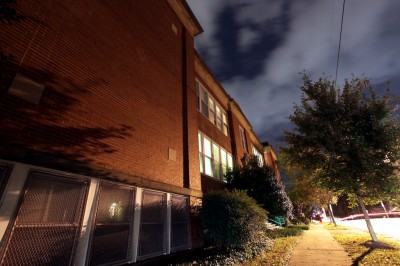
Murphey School
Murphey School was designed by James Matthew Kennedy and built in 1916. Kennedy was the same noted local architect that designed City Market. In 1960 the Raleigh school board voted for desegregation when board member J.W. Willie York made a motion to integrate Murphey School. Murphey was chosen in particular because of its proximity to black and white neighborhoods, as well as the fact the Governor Terry Sanford’s children attended it.
Ten years after that locally-historic moment, the school building was abandoned. It was converted some years later to a senior living facility.
Make a short left at the intersection with Polk Street to see a fine example of historic preservation and adaptive re-use.
Four years ago, the Murphey School Auditorium was renovated and became Meymandi Theatre, the new permanent home of the Burning Coal Theatre Company.
Keep heading North toward the neon oasis in the distance.
And Now, for the ‘Sweet’ Part
The sometimes lit HOT DOUGHNUTS NOW sign, along with the neon store sign, have long been a beacon of hot and delicious sweetness. This walking tour is a way in which you can learn a little about Victorian architecture as well as get doughnuts without feeling guilty. The walking tour is just shy of a mile walk.
Although the calories burned in the walking tour don’t quite equal the calories present in a doughnut, I encourage you to reward yourself for learning about some of the Victorian architecture in Raleigh.
Cross Person Street and start walking back toward the starting point.
A Modest Gothic Revival
At first glance, the home above looks much like the common turn of the century Triple-A houses seen in Oakwood and Southeast Raleigh. However, there are a few features that indicate a Gothic Revival influence. One is the large, steeply-pitched front cross gable with bargeboard.
The trefoils seen on the bargeboard of the front gable are very prevalent in Gothic Revival structures. The wave patterns on the porch trim are also common to the style.
The Gothic Revival style was popular from 1840s – 1880s.
Classic Italianate House
The house above is a fine example of the Italianate Style. Over sized ground level fenestration, prominent and chunky cornice bracketing, and an imposing shape reveal the style of this house. Other local examples are the Dodd-Hinsdale House, the Merrimon-Wynne House, and the Andrews-Duncan House.
Typical Italianate features are low-pitched roofs, large bracketing under eaves, and doors in the same shape/size as windows.
The Italianate style was popular from the 1840s – 1890s.
The Gothic Revival Style, with Ecclesiastical Flair
The exterior shape of the house above is common to a restrained Italianate style, but the exterior is quarried stone (probably local, as in Broughton High School and the Josephus Daniels House), which is more common with Gothic Revival. Normally found in church architecture, the street-facing lancet windows on the second floor are another clue to its Gothic roots.
Neoclassical Revival: The Tucker House
Originally located at 420 Blount Street, the 1915 Tucker house was moved to Person Street in the 1970s to save it from destruction. It’s one of only a few examples of Neoclassical Revival architecture in Raleigh. It is currently administered by Raleigh Parks and Recreation and is open to the public with an appointment. It is also available for weddings and other events.
Neoclassical houses are usually two stories with Greek or Roman inspired columns, with other small details of classical inspiration.
The Neoclassical Style of architecture was popular from the 1890s – 1930s.
Continue walking until you reach the intersection of Person St. and Oakwood Ave.
The Towers at the Gates of Oakwood
An official designated Raleigh historic landmark, the Carey J. Hunter house (above) was built in 1882 and later modified in 1900.
Across from the Hunter House is 304 Oakwood Avenue. This house probably looks familiar, as it bears a striking resemblance to the Dodd-Hinsdale House on the 300 block of Hillsborough Street. Both houses had the same builder, and were built at about the same time. The house in Oakwood is a few years older.
Second Empire? Not Entirely…
Perhaps because of their towers with cupola and iron cresting, 304 Oakwood Avenue and the Dodd-Hinsdale House are frequently cited as examples of the Second Empire style. However, the house above, and in particular the Dodd-Hinsdale, display many traits that are more of an Italianate flavor.
There isn’t a sharp line dividing Italianate with Second Empire, but the latter tends to be more elaborate and intricate, as well as more vertical. Noticeably absent here is a mansard roof (not counting the tower) which is prevalent in nearly all Second Empire structures.
The Second Empire style was popular from the 1850s – 1890s
The Transition From Flair To Restrained
Traveling further south, the houses seem to become a bit more subtle and symmetric.
Some of the familiar trademarks are still around, but the style transitions to that of Classical Revival.
Person street is a living timeline of shifting decorative and architectural tastes.
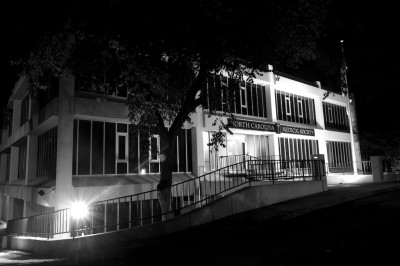
The Modern Exception
The one building that really stands out is the North Carolina Medical Society Building. Designed by local modernist architect Milton Small and built in 1971, it is also a building representing transitional styles: that of the International Style, and that of Brutalism.
The tall tinted glass windows represent the International Style, and the poured concrete exterior mark the Brutalist trait that became popular in the early 1970s.
Queen Anne and the Second Empire
The house above is at the corner of Jones and Person Streets, and is currently is home to a law firm. The house exhibits predominantly Queen Anne styles, but features a central crested Second Empire tower.
The Locally Rare Stick Style
One of Raleigh’s few Stick style Houses, the Marshall-Harris-Richardson House was built at the year it seems so many houses were built: 1900. Stick style houses are a subgroup of the Queen Anne variety.
Some of this house’s features which indicate the Stick-style is its rectangular shape, decorative wood paneling on the various cross gables, protruding eaves, and decorative rounded porch trim. This style wasn’t very popular in the south, which probably explains the rarity in Raleigh.
The Stick style was popular from the 1860s – 1890s.
Walk back toward the corner of Jones and Person Streets.
The Mystery Inscription and the Challenge
The origin of the names on the bricks that surround the governor’s mansion isn’t a mystery, but the one in the photo above is. There are two stamps on the sidewalk at the intersection of Person and Jones Streets. Each one reads:
Old
Reliable
Honeycutt
Of Course
1915 (?)
There are two sidewalk slabs with this inscription, and some quick internet searching yields no clues. Was Honeycutt the company that laid the sidewalk or made the concrete? I have no idea, but if you can give me a reasonable explanation with something to back it up, I’ll give you a matted 8×10 print of any of the photos in this article.
With this challenge comes the end of the Person Street walking tour.
The Spanish Mission Style Bookends
Although not on the tour, there are two former service stations that each have a new life on Person Street.
The service station above was most recently Biscuit Station, but is currently in the process of becoming Ruben’s Downtown. Ruben’s is expected to open soon.
On the other end of Person St (closest to Krispy Kreme) is the former Amoco Station. It is current the home of Rosie’s Plate, a specialty kitchen specializing in prepared foods that can work with any diet.
Closing Thoughts
Person Street has a rich and diverse history. Luckily for us, this Victorian neighborhood street has remained largely intact. There are a few sets of stairs to nowhere and empty lots – including one of Raleigh’s greatest architectural losses:Â Baptist Female University (later Meredith College).
Even with the great loss of the old Meredith College Building, this area was hit far less than neighboring communities to the west when the state government was expanding in the 1970s.
The next time you want to get out of the house and see something different, drive/walk/bike/run/unicycle to the area around the governor’s mansion and walk around Person Street. It’s a beautiful and under-appreciated part of the city.
Note: Unless otherwise stated, the homes listed on this walking tour are private residences, businesses, or owned by the state. As such, they are not open to the public.
Related Articles
- The Hidden Victorian Houses of Hillsborough Street
- The Fabius Briggs House: A Crumbling Raleigh Relic
- Col. Heck’s Oakwood ‘Spec’ Houses
- Raleigh’s Own Castle: The Old Meredith Building
- Reminiscences of a Raleigh Boy, Part 1: Blount Street
Further Reading
- Leo’s Downtown Walking Tour (the Raleigh Connoisseur)

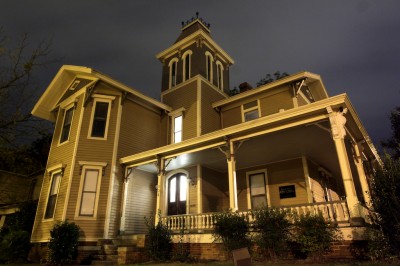

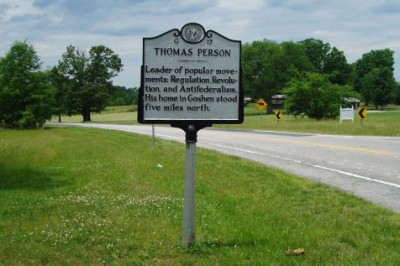

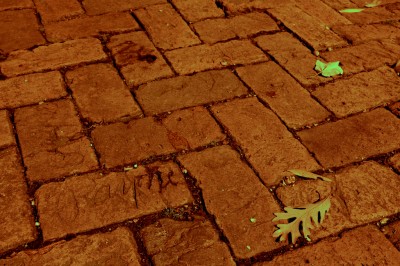
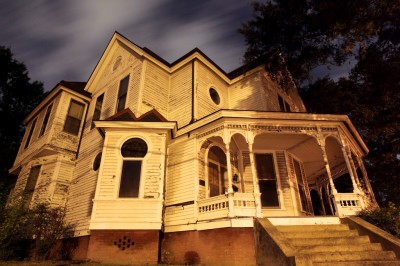
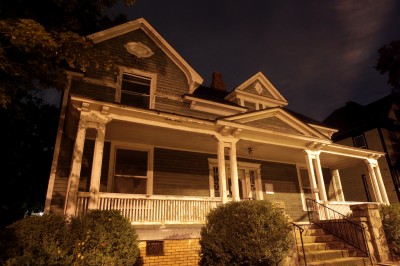
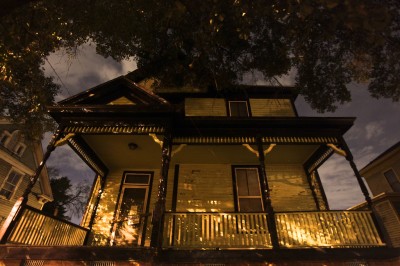
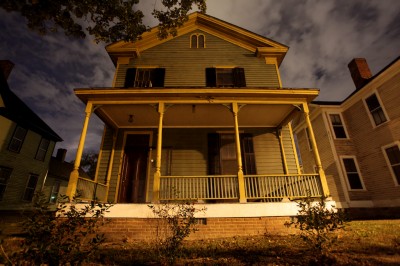
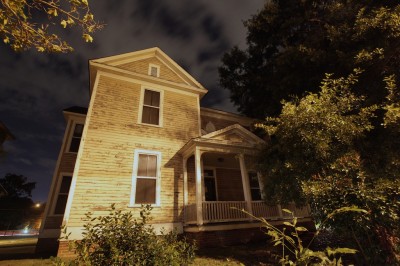
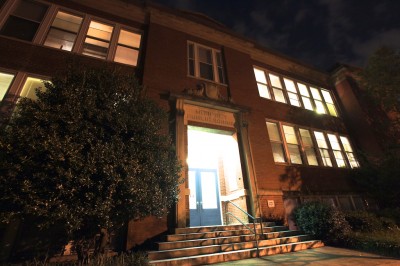
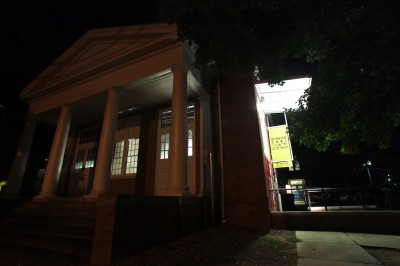
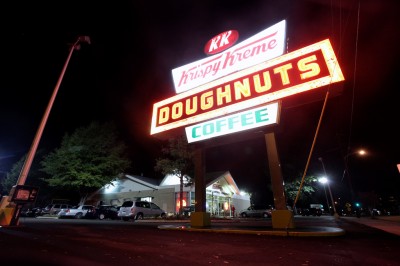
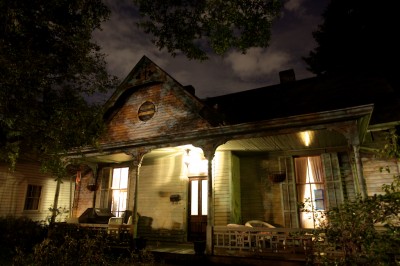
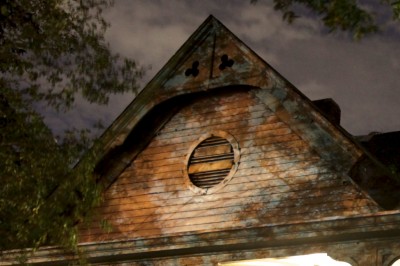
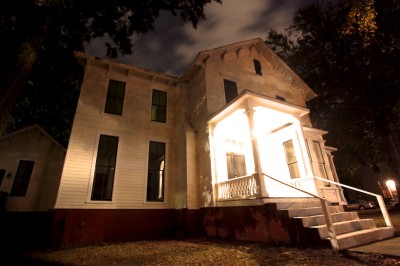
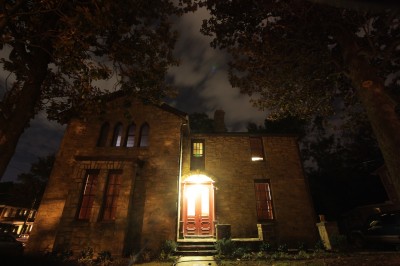
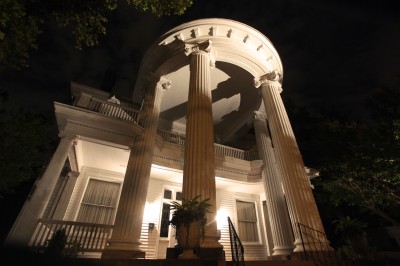
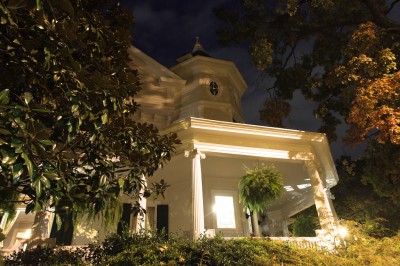
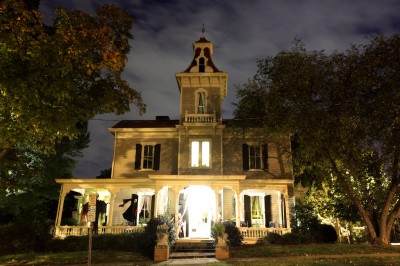
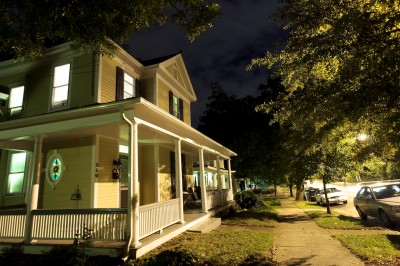
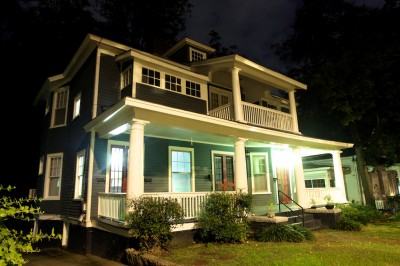
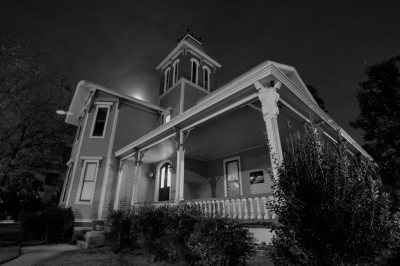
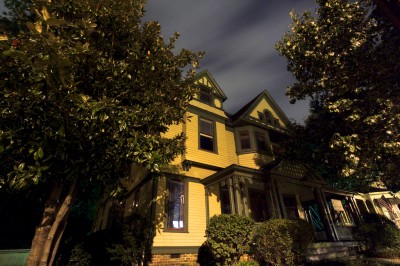

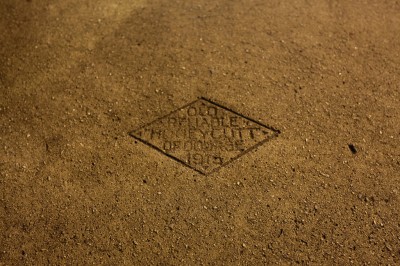
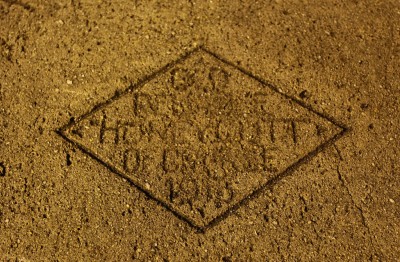
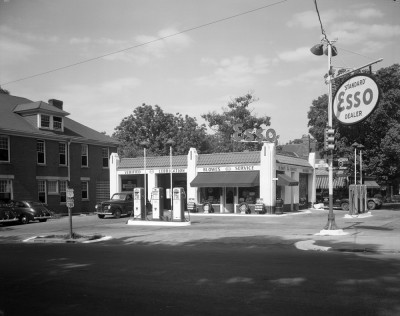
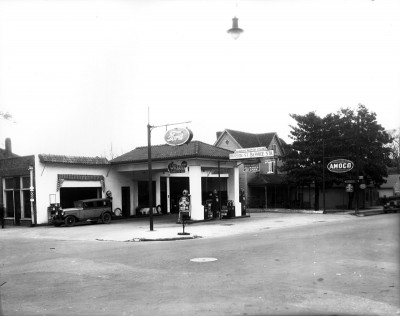
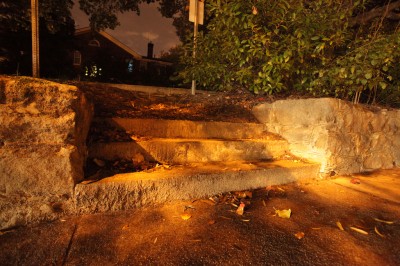
 Sign up for the Newsletter
Sign up for the Newsletter
11/01/2010
Amazing work! Bookmarked and saved for the next time I’m walking in that area.
11/01/2010
Excellent work! I walk Person all the time and can now appreciate the back stories..
For some reason, I thought the names on the bricks at the Governor’s mansion were of former Governors, but the truth is much more interesting..
11/01/2010
Thank you for the lovely tour, in the future you might want to add PieBird, 618 N. Person Street. We hope to open in late Nov., featuring sweet and savory pies. PieBird will be located in the former location of Conti’s Italian Market before that the building was the first Krispy Kreme in Raleigh.
11/01/2010
We live on Person St. and may have some info on the Honeycutt stamps. A retired man used to come into my friends office by the name of Percy B. Honeycutt (Ben). He told her that he grew up in Oakwood in his family’s home on that corner. He has since moved to Arizona to be with children, she though. She was pretty sure those stamps refer to his family and the family’s home.
11/02/2010
It seems to me that the Honeycutt mark is an advertising pun. Think about it this way — concrete is laid in “courses” (layers or sections, depending on desired thickness). In addition, there is “coarse” concrete (used on roadways and sidewalks) containing larger particles of sediment, and “fine concrete” used for decorative purposes or when a smoother concrete surface is needed (concrete flooring comes to mind).
I may be off, but I think the stamp was just a clever gimmick by a local concrete company telling you to choose “Old Reliable Honeycutt, of ‘course'”!.
Of course (no pun intended), Honeycutt was a very prevalent name from Raleigh Eastward — I can think of Honeycutt Park in Raleigh, Honeycutt Road in Raleigh, Old Honeycutt Road in Fuquay-Varina, Honeycutt Road in Clinton, as well as the large Sampson/Harnett/Johnston county Honeycutt family (to which I am related). I know of one T. Honeycutt who was in charge of road-construction bids in Johnston County in the early 1900’s according to one document I’ve seen, so this could be a family enterprise.
11/02/2010
I think Clark wins the prize! Great article!
11/06/2010
Great work, John. Really enjoyed reading this. Photographs are stunning.
11/08/2010
Sheilah – I look forward to the opening of the new store, and hope it can be an alternate “sweet” destination spot for those taking a tour of the area.
Clark – I’m in agreement with chug, you’ve clearly won the mystery challenge. I’ll be in touch with with details. Thanks to you and Mike for offering background on the sidewalk stamps.
11/18/2010
Thanks for the terrific article. I fancied Honeycutt as a horse of course.
03/28/2011
This was my Great Great Grand Father Fabious Watson Honeycutt who started a construction company after the Civil war. He is buried in Oakwood with a grand tombstone. His son took over the company and went broke in the Great Depression. He is buried beside him in an unmarked grave. My grand father was a prime contractor on Rex Hospital and Central prison. Look at some of the old city directories of Raleigh and you’ll see whole page ads for Honeycut and Son.
These marks were common back then. The company name was stamped in the wet concrete.
08/21/2011
I found this on the internet. Maybe it explains the Hunnycutt name. Let me know what you think, please.
Hunnicutt Henry, bricklayer’s apprentice, r 226 s Swain
Hunnicuttt W G, brickmason, wks with Hammell & Hun-
nicutt, r 557 e Martin
http://www.ebooksread.com/authors-eng/broughton–co-edwards/directory-of-the-city-of-raleigh-north-carolina-serial-volume-1887-awd/page-7-directory-of-the-city-of-raleigh-north-carolina-serial-volume-1887-awd.shtml
10/01/2011
I thought the person that wrote this article wanted info on Hunnycutt. I wanted an answer as to if the info I gave helped. How do I get an answer? Thanks
02/10/2015
Over 3 years later I am back. Click here about Hunnycutt
http://goodnightraleigh.com/2014/10/raleighs-city-market-turns-100-years-old/
12/31/2022
The Woodell house is officially styled as the Cambridge house, and has been bought from the state and renovated. My great great grandfather, Henry George DeBoy bought the house around 1917 I believe. My Great grandmother Ellee DeBoy Kennedy used to tell me stories about growing up there, playing with the Governor’s children next door. Grandaddy lived there for a time as well.